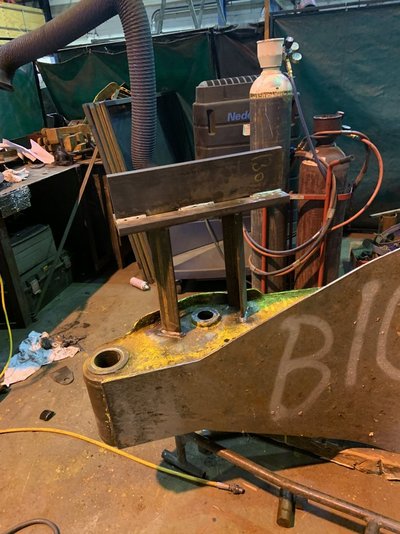You are using an out of date browser. It may not display this or other websites correctly.
You should upgrade or use an alternative browser.
You should upgrade or use an alternative browser.
How would you machine this wedge shape?
- Thread starter awemawson
- Start date
grim_d
Unlikeable idiot.
- Messages
- 4,275
- Location
- Scotland - Ayrshire
Almost but not quite - that one needs the roller cage to be removed first and is really a clamp, whereas the splitter goes behind the outer and the face that it is up against and forces the wedge in creating a gap for a three leg puller's 'toes' to get in.
To be honest I didn't read the first post, it just immediately reminded me of that video.

Does the bearing need to be re-used? I presume not if your planning on pulling on the outer race?
In which case just get rid of the cage, slit the race then burst it with a cold chisel.
I'm gash.

Brad93
Member
- Messages
- 19,085
- Location
- Essex, United Kingdom
Brad93
Member
- Messages
- 19,085
- Location
- Essex, United Kingdom
You literally need a bearing splitter or a knife in which case you need a very shallow angle to force the bearing off the back of the housing/shaft. In which case your part need to be machined as one piece in order to drive the bearing off the shaft evenly.Almost but not quite - that one needs the roller cage to be removed first and is really a clamp, whereas the splitter goes behind the outer and the face that it is up against and forces the wedge in creating a gap for a three leg puller's 'toes' to get in.
Not seen that video but I do follow Curtis !
No reason you couldn't turn it in the lathe and just go with a very shallow angle as per curtis' video. Then drill and tap from the sides.
Brad93
Member
- Messages
- 19,085
- Location
- Essex, United Kingdom
The fun methodOut of interest, cant the bearing be cut off.
I’ve done one (of four) by mangling the cage and using a drift on the step that the rollers sit on. But really I only want to change the big rotary seal that is behind the bearings but to do that the bearing has to come off and remain in good enough condition to go back on.
Reminds me of Land Rover axle oil seal wear collars.Out of interest, cant the bearing be cut off.
mtt.tr
Member
- Messages
- 8,454
- Location
- Essex/Suffolk border
Ah right that does mean extraction rather than abortion.I’ve done one (of four) by mangling the cage and using a drift on the step that the rollers sit on. But really I only want to change the big rotary seal that is behind the bearings but to do that the bearing has to come off and remain in good enough condition to go back on.
See post 1.I'm watching a few on eBay. See if any can be had reasonably. What is the size of the bearing?
Not as daft as it sounds. Print in PLA, entomb in dry silica sand and 4% sodium silicate. Set with carbon dioxide. Burn out the PLA in my pottery kiln and cast as someone suggested in aluminum bronze using my induction furnace. Al bronze has amazing tensile strength exceeding that of steel! (Google tells me!)Print it!
I'll get me coat...
mtt.tr
Member
- Messages
- 8,454
- Location
- Essex/Suffolk border
Not as daft as it sounds. Print in PLA, entomb in dry silica sand and 4% sodium silicate. Set with carbon dioxide. Burn out the PLA in my pottery kiln and cast as someone suggested in aluminum bronze using my induction furnace. Al bronze has amazing tensile strength exceeding that of steel! (Google tells me!)
Ton
have a bloody great furnace!
Onoff
In the land of the unfinished project I am King!
- Messages
- 12,589
- Location
- Sevenoaks, UK
Not as daft as it sounds. Print in PLA, entomb in dry silica sand and 4% sodium silicate. Set with carbon dioxide. Burn out the PLA in my pottery kiln and cast as someone suggested in aluminum bronze using my induction furnace. Al bronze has amazing tensile strength exceeding that of steel! (Google tells me!)
Wot I said...





